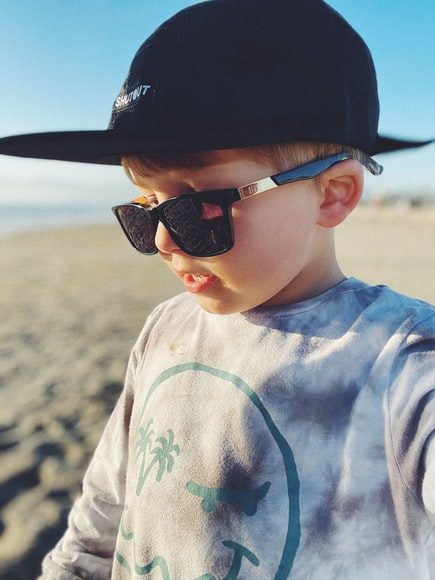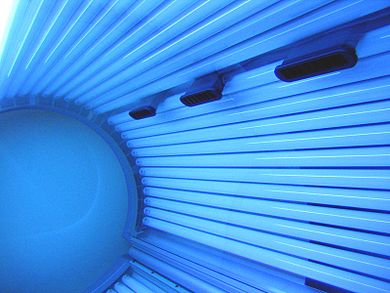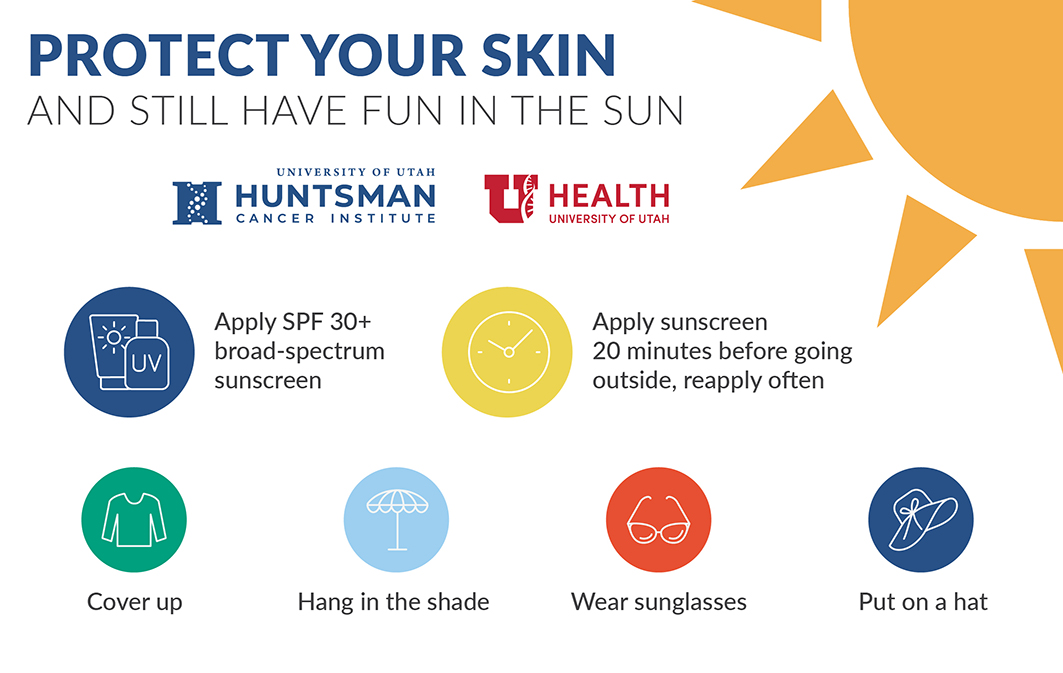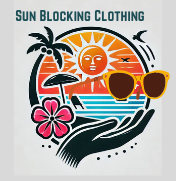The dark side of tanning and your health will raise your awareness of the damage the sun can do.

This fun image from many years ago reminds us of how long people have been loving tan skin. While the products sold back when this ad was out were to make you tan more, not protect your skin.
And usually, you had a sunburn before you had a tan. We did not know about protecting our skin.
Are you a sun worshipper? We all love a sun-kissed glow, but let’s take a moment to talk about the potential health consequences of excessive tanning.
While basking in the sun may feel wonderful, it’s crucial to understand the risks associated with prolonged exposure to ultraviolet (UV) radiation.
It is time to have a conversation about the darker side of tanning and highlight the importance of responsible sun exposure.
Who doesn’t like soaking up those sun rays? It feels so warm and comfortable. Talk about relaxing.
Then there is the tan itself, who doesn’t like that surge of confidence that floods your whole being when you have a golden tan?
The look of a skin-kissed glow is so compelling for many of us, myself included. I almost forget that I have felt that wonderful feeling too many times in my lifetime.
We associate that glow of a tan with a healthy glow, but is it? Are you aware of the health implications that go with the look of a tan?
Let’s take a look at some of the health concerns that go with a tan.
Skin Cancer, a Real Concern
Excessive tanning can significantly increase the risk of developing skin cancer.
The UV radiation emitted by the sun or tanning beds damages the DNA in our skin cells.
Once there is damage, even just a little damage, like a freckle. Have you lost your freckles from the sun? Me either!
If your freckles were the result of being in the sun, as mine are, you have sun damage. That skin where the freckle is will never be the smooth clear skin it was.
So I healed from the sunburn with some leftover damage. The DNA was affected, and now I won’t ever have the smooth clear skin I once had. That area has been changed forever. I will always have a freckle there.
What will happen if I get more damage? Will my skin be able to heal without a weak spot that will set the gears in motion for skin cancer?
Even a little mutation can trigger the development of cancerous cells.
Science Online Library The link, onlinelibrary.wiley.com/doi/10.1111/j.1751-1097.2008.00455.x explains how overexposure to the sun over a long period of time changes your skin.
Mark L Steinberg, Department of Chemistry. The City College of the City University of New York, NY included the following statement about sun exposure and melanoma:
Melanoma, the deadliest form of skin cancer, is strongly associated with intense sun exposure and tanning bed use.
We must protect ourselves by using sunscreen, avoiding peak sun hours, and avoiding artificial tanning methods that also emit harmful UV rays.
Wrinkles and Sunspots Are Ugly Words for “Early Aging”
When you hear the words early aging, do you think of wrinkles and sunspots? If you’re wanting to maintain youthful, radiant skin, excessive tanning won’t be your friend.
UV radiation accelerates the aging process. By causing premature wrinkles, fine lines, and age spots the sun is wrecking your skin.
The sun’s rays break down collagen and elastin, which are essential for maintaining the skin’s elasticity and firmness. Even with sunscreen, over time, this can lead to a leathery appearance and a loss of skin tone.
Embracing sun-safe practices can help preserve your skin’s youthful glow for years to come. Or as many generations of us who didn’t use enough sunscreen have found, you can spend a fortune trying to repair damaged skin.
Remember looking old before you should affect your self-esteem. This will make you more subject to addictive tanning behavior. Not only is your skin losing its ability to repair itself with overexposure to UV rays, but your inner confidence is taking a hit if you don’t stay tan.
Arriving at a degree of tan that keeps your skin healthy and allows you to feel good about yourself is a cycle that many attempt to follow. They pour money into products to keep their skin looking good while spending hours in the sun.

Eye Damage
We often forget that our eyes are also at risk during excessive tanning sessions. Research suggests that it is important to avoid damage even when young.
Prolonged exposure to UV radiation can lead to a range of eye problems.
Cataracts, pterygium (a growth on the white part of the eye), and macular degeneration are the most common.
Shielding your eyes with UV-blocking sunglasses and wearing wide-brimmed hats are simple yet effective ways to safeguard your eyes from the harmful effects of the sun.
Yes, most of the problems with sun damage to your eyes are the same ones you are more apt to see when you get older. Just like the sun makes 40-year-old skin look 65 years old, the sun makes 40-year-old eyes do similar early aging.
While a tan may seem like a temporary beauty boost, the long-term consequences of excessive tanning are significant.
Skin cancer, premature aging, and eye damage are just a few of the potential health risks we expose ourselves to when we overindulge in sun exposure.
The good news is that we can still enjoy the sun responsibly by taking necessary precautions.
Reschedule your tanning times to before 10 AM and after 4 PM. Avoid that sun when it is the strongest.
What about your medications? Are you taking them into consideration before tanning? The CDC has warned about some meds and sun exposure.
Let’s embrace the beauty of a healthy glow while keeping ourselves protected!
Are Tanning Beds Safe?
In the media, there is a link between tanning beds and skin cancer. But is there really a link between the two in real life?
We’ve already discussed the potential health consequences of excessive tanning. But now let’s shine a spotlight on the connection between tanning beds and skin cancer.
Tanning beds may seem like a convenient way to achieve that desired glow.
But there’s mounting evidence linking them to increased skin cancer risks. Do these seemingly harmless devices pose a significant threat to our skin health?
My two daughters were on the tanning bed bandwagon. Our small town didn’t have a tanning salon, but as they were out on their own, college town always had salons around. They enjoyed their tans.
They are both now dermatology patients who see their doctor at least 2 times or more a year, according to what is discovered on their skin.
So far they have been able to have the problem taken care of with day surgery. I hope that is always the case.

Understanding Tanning Beds
Tanning beds, also called sunbeds or solariums, emit artificial UV radiation that mimics the sun’s rays.
They are designed to provide a controlled environment for tanning enthusiasts.
What many people may not realize is that tanning beds emit both UVA and UVB rays, which can penetrate deep into the skin. This deeper penetration results in DNA damage.
Convenient tanning beds allowed patrons to tan day or night, summer and winter. Customers loved those tanning salons.
This DNA damage puts our skin at an increased risk of skin cancer.
This increased risk is the basis of why tanning beds have become a cause for concern in the world of dermatology.
The Skin Cancer Connection
Research has consistently shown that using tanning beds significantly increases the risk of developing skin cancer.
The International Agency for Research on Cancer (IARC) categorizes tanning beds as Group 1 carcinogens.
This makes them land in the same category as tobacco smoke and asbestos.
Studies indicate that individuals who use tanning beds before the age of 35 have a staggering 75% increased risk of developing melanoma.
Melanoma is the deadliest form of skin cancer. This alarming statistic underscores the urgent need to raise awareness about the dangers of tanning bed use.
Were you a tanning bed tanner?

The Role of UV Radiation
Science has proven that UV radiation is the primary culprit behind the link between tanning beds and skin cancer. On the negative side, UV is a mutagen and carcinogen for the skin.
Both UVA and UVB rays emitted by these devices can cause DNA damage in skin cells. Over time, this damage can accumulate and lead to mutations that trigger the development of cancerous cells.
Moreover, the intense and concentrated UV exposure from tanning beds can be even more harmful than natural sunlight.
It’s crucial to understand that a tan obtained from a tanning bed offers no protective benefit against future sun damage. It’s simply an indication of DNA damage to the skin.
The same is true of a tan from the sun. A tan shows damage to the skin, you will still sunburn. It may take longer to reach the sunburn stage, but if you stay out, you will sunburn. You aren’t protected by the tan alone. Safe tan practices are important as well.
The Regulations and Safety Measures
Recognizing the potential risks associated with tanning beds, many countries and regions have implemented regulations to safeguard public health.
Some jurisdictions have banned the use of tanning beds for minors. Others require warning labels and educational materials to inform consumers about the risks.
Additionally, industry standards have been established to limit the UV output of tanning beds.
These measures aim to raise awareness, promote responsible sun exposure practices, and reduce the incidence of skin cancer caused by tanning bed use.

How Can You Safely Stay Tan?
What are some alternatives for staying tan? Do you know safe tanning practices? The image above was in the information provided by Huntsman Cancer Institute and The University of Utah.
It’s important to note that achieving a healthy glow doesn’t require exposing ourselves to harmful UV radiation.
Numerous alternatives to tanning beds exist, such as self-tanning products, spray tans, and bronzing lotions.
These options provide a safer and more controlled way to achieve a tan without the associated risks.
You can also adopt sun-safe practices like using broad-spectrum sunscreen, seeking shade during peak sun hours, and wearing protective clothing can help minimize UV exposure and reduce the likelihood of skin cancer.
Tanning beds may offer a convenient way to achieve a tan, but their association with skin cancer cannot be ignored.
The link between tanning beds and skin cancer has been extensively studied. The evidence is showing a significant increase in risk, especially among younger individuals.
As we prioritize our skin health and overall well-being, it’s important to choose safer alternatives and embrace responsible sun exposure practices.
Let’s bask in the beauty of a healthy glow without compromising our long-term health.
Tanning Beds and Skin Cancer
By understanding the connection between tanning beds and skin cancer, we can make informed choices and protect ourselves from unnecessary risks.
Remember, your skin is precious, and preserving its health should be a top priority.
Embrace safer alternatives, such as self-tanners and bronzing lotions, which provide a temporary tan without the harmful effects of UV radiation.
These products have come a long way, offering natural-looking results that can satisfy your desire for a sun-kissed appearance.
In addition to exploring alternative tanning methods, it’s also important to adopt sun-safe practices.
Apply a broad-spectrum sunscreen with a high SPF before stepping out into the sun. Then, reapply it every two hours or after swimming or sweating.
Seek shade during the peak hours of the day, typically between 10 A.M. and 4 P.M., when the sun’s rays are strongest.
When spending time outdoors, wear protective clothing like wide-brimmed hats, sunglasses with UV protection, and lightweight clothing that covers your arms and legs.
Education and awareness play vital roles in preventing the risks associated with tanning beds.
Stay informed about the latest research and recommendations from reputable sources. Share this knowledge with your friends and family.
By spreading awareness, you can help protect others from the potential dangers of tanning bed use.
It’s important to support regulations and policies that prioritize public health.
Advocate for stricter regulations regarding tanning bed use, especially for minors who are more susceptible to the harmful effects of UV radiation.
Encourage the inclusion of warning labels and educational materials in tanning salons, ensuring that consumers are fully aware of the risks associated with these devices.

Sami’s Take on The Dark Side of Tanning and Your Health
There is a real connection between tanning and health. With repeated exposure, you can damage your skin to the point that it will no longer be able to do the things your skin is designed to do.
With the dangers that we now know are associated with tanning, finding a way to remove yourself from the repeated cycle, year after year is important.
Are you just riding along with friends and joining the tanning cycle? Will you step back and look at what science tells you? Would you be able to turn to artificial tanning lotions and spray tans for your sun-kissed look?
Or maybe it is time for you to consider the real world of evidence that is stacking up and decide that it is time to step away from tanning altogether.
Your natural skin colors are beautiful. Your self-worth is not diminished when you don’t have a tan.
Even though you don’t get to the bronze stage of being tan, exposing your skin to the UV rays time after time will exact a price after a while.
Cover your skin and protect it from damage.
You can be a complete person even if you choose to keep your skin healthy. In case you have forgotten about how your skin keeps you healthy, check out this link for an explanation about skin and what it does.
I know, adulting and being responsible is a bit difficult. But you can do it!
Thanks,
Sami
